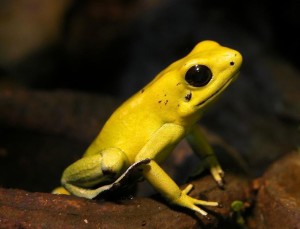
Amphibians are one of the least proved classes of verberates. This is quite surprising considering the wide variety of psychoactive and bioactive peptides found in this group.
In terms of larger scale group Caecilians remain completely unproven, with no members of this group either potentised or proven. Any caecilians would be a welcome addition to the material medica. Particularily interesting would be a species of Atretochoana, a Brazilian species which is the largest tetropod that lacks lungs.
Relatively few species of Caudata have been proven as well. Interesting candidates would be the Olm, Proteus anguinus, a blind species of colorless cave dwelling salamanders found in southern Europe would be an interesting candidate. The Pleurodeles and Tylototriton genera of salamanders are remarkable in their possession of sharp ribs which can be pushed into predators and used to inject venom. This is a completely unique method of venom delivery and would make them fascinating provings. The world’s largest salamander, the Japanese giant, Andrias japonicas, would also make an excellent candidate.
Frogs and toads have a greater number of proved specimens, but a number of fascinating species with great proving potential exist. The hallucinogenic frog, Bufo alvaris, also presents an interesting potential for Homeopathic use. More thorough proving would be excellent. Corroboree frogs (Pseudophryne species) are unique in producing their own venom, rather than deriving it from external sources. Perhaps the greatest medicinal potential lies in the Poison dart frogs of South America. Used by indigenous groups to literally poison darts and paralyze prey, the skin secretions of these frogs have powerful medicinal properties that could be very useful potentised. Two members of this group, Dendrobates auratus and Dendrobates tinctorius have been potentised already, and simply await thorough provings. Phyllobates terribilis is also an excellent candidate, with a toxic profile so distinct as to be included in this material medica. I would ask any pharmacy making remedies from these frogs to use wild specimen, capturing the full spectrum of toxicity these frogs posess in the wild. Captive specimens generally do not display toxins, and likely would not produce remedies with as profound a therapeutic effect. Pharmacies must track the source of their remedies, maintain this information, and share it when they share remedies with one another.
Image Credit: https://en.wikipedia.org/wiki/File:Schrecklicherpfeilgiftfrosch-01.jpg